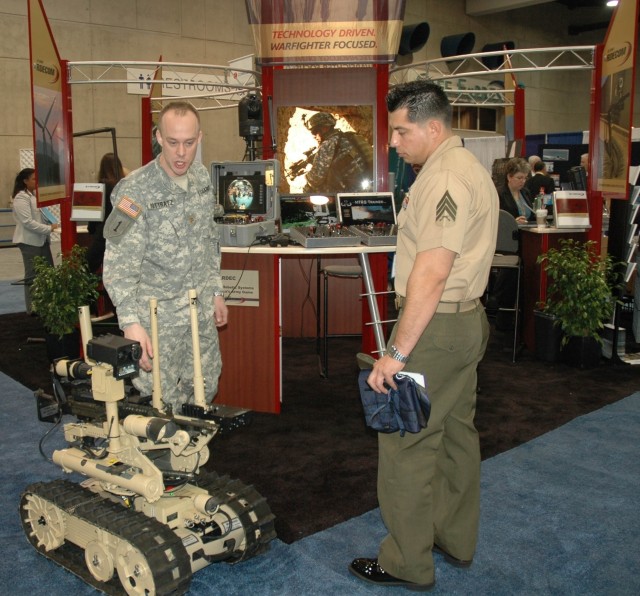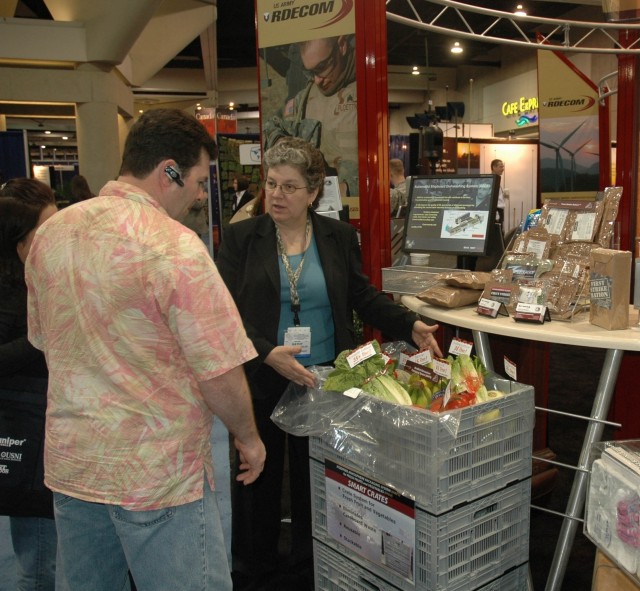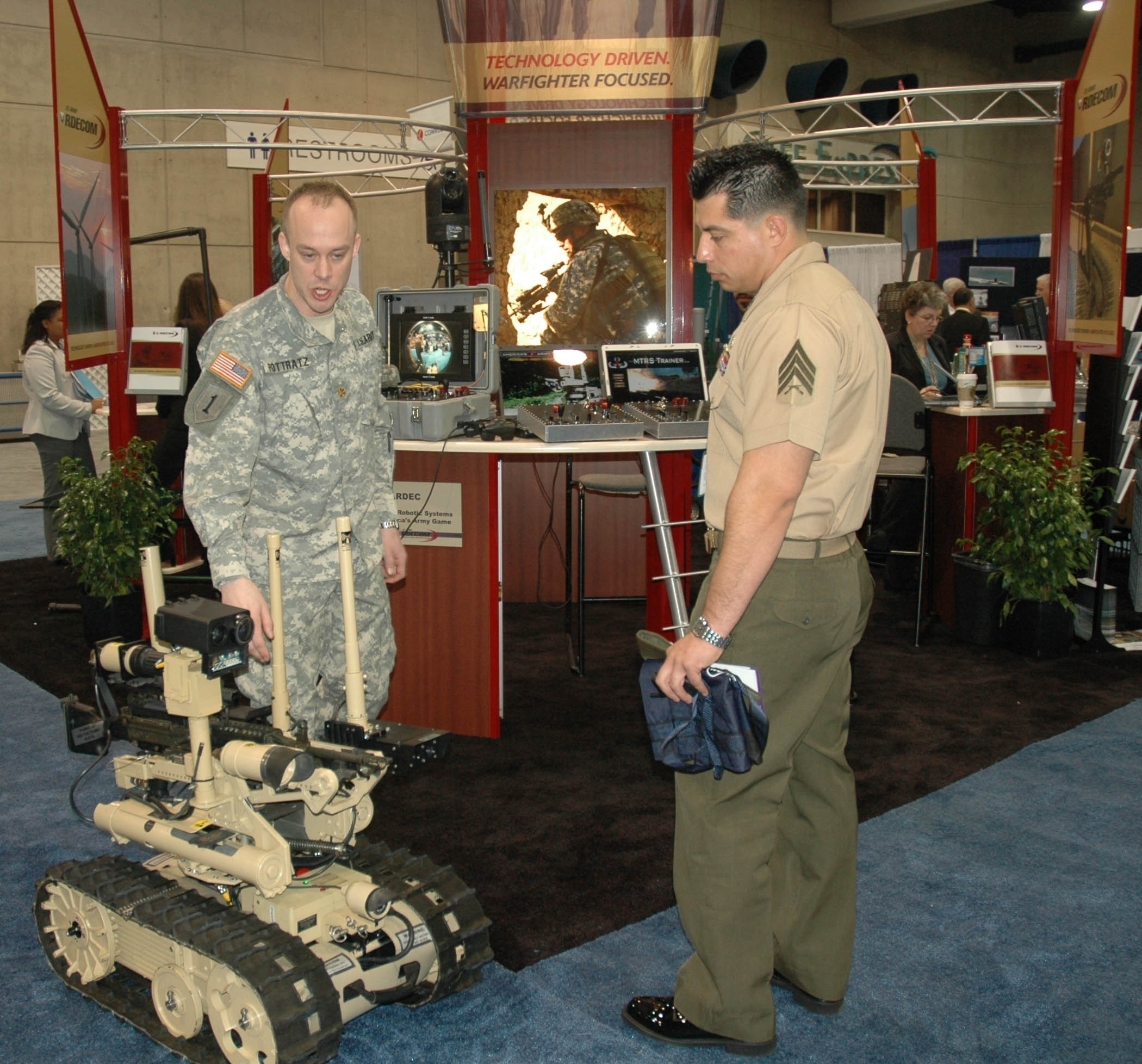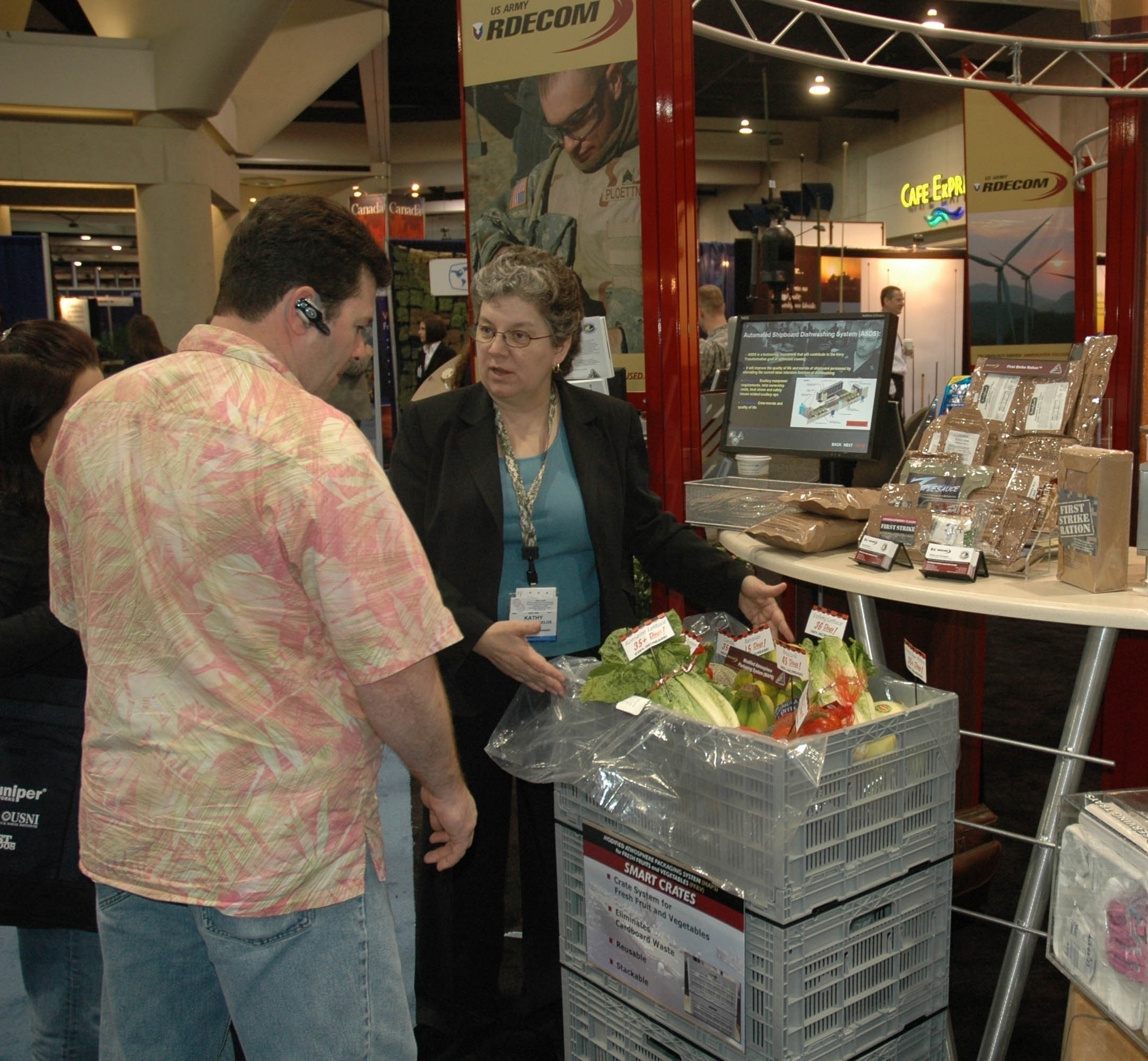SAN DIEGO - The U.S. Army Research, Development and Engineering Command, a major subordinate command of the U.S. Army Materiel Command, exhibited its cutting-edge technologies at the Western Conference and Exposition 2008, Feb. 5 to 7 at the San Diego Convention Center.
WEST 2008 is co-sponsored by the Armed Forces Communications and Electronics Association and the U.S. Naval Institute. More than 400 technology leaders attended the conference to showcase technologies and participate in discussions led by military experts.
RDECOM's scientists and engineers in the communication, electronic and intelligence fields displayed technologies such as the Special Weapons Observation Remote Recon Direct Action System, the America's Army SWORDS Trainer, Digital Tactical Holograms, Cold Spray Technology and the Combat Feeding System.
RDECOM subordinate elements present included the U.S. Army Natick Soldier Research, Development and Engineering Center, U.S. Army Armament Research, Development and Engineering Center, the U.S. Army Research Laboratory, and the U.S. Army Simulation and Training Technology Center.
RDECOM's joint initiatives were magnified at the event with NSRDEC's Combat Feeding Directorate, which works on technologies applicable and useful to not only the Army, but to all services. In particular, NSRDEC has worked on several initiatives for Navy use in the support of Navy transformation. Transformation supporting technologies such as the hatchable combi-oven, designed to fit in through a 28-inch hatch, which are characteristic on naval ships and submarines, were displayed at the event.
In addition, NSRDEC's Department of Defense Combat Feeding Directorate displayed some of the newest developments in Warfighter rations. The First Strike Ration is a compact, eat-on-the-move assault ration designed for use during initial periods of heightened combat mobile operations. Due to limited space while on fast-paced and high-risk missions, Warfighters often field-strip their Meals, Ready to Eat, or MRE's. Now, the FSR will be issued at one per Warfighter per day, with a 50 percent reduction in weight and cube, according to Kathy Evangelos, program integrator.
"In field tests conducted both CONUS [continental United States] and OCONUS [outside the continental United States], Warfighters consumed over 90 percent of the FSR. By decreasing the size, while maintaining nutrition and taste, as well as providing eat-on-the-move capability, they are more likely to pack and consume the whole ration when deployed," said Kathy Evangelos. "All of our rations are Warfighter recommended, Warfighter tested and Warfighter approved."
Keeping safety in mind for Soldiers and Navy Seals, the Unitized Group Ration-Express is a compact, self-contained module that provides a complete, hot meal for 18 Warfighters. "This technology saves lives, due to the fact it reduces the need for convoys to deliver hot chow to remote units," said Evangelos. The UGR-E uses a safe exothermic chemical reaction, similar to the Flameless Ration Heater, which provides the heat needed to raise the temperature of the food from 40 degrees Fahrenheit to 140 degrees Fahrenheit within 35 to 40 minutes.
ARDEC showcased its SWORDS robot, with its latest additions, the Head-Aimed Remote viewer and the Wide Angle Robotic Vehicle Vision System. HARV increases the performance of unmanned systems by providing complete remote situational awareness through the use of a head-aimed camera system. The WRVVA, a low cost plug and play system, provides a wide angle day and night viewing capability for Soldiers using the robot.
"The innovative characteristic about this new camera is it increases the Warfighter's line of sight and situational awareness," said Maj. Michael Pottratz, ARDEC explosive ordnance disposal deputy director of technology.
The SWORDS robotic training system is operated by the America's Army game. Launched in July 2002, America's Army is a fully interactive 3-D environment designed to create a variety of cost-effective applications from trainers to virtual prototypes. With training applications for the SWORDS, America's Army allows Soldiers to develop and enhance their skills on controlling these robotic systems without the actual robot being present.
"This game allows Soldiers to train on how to use the robot, without removing robots in use by Soldiers deployed," said Pottratz. "Our aim is to have our Soldiers trained on the equipment and be ready to employ the technology at first contact with the robots."
ARL's Cold Spray Technology is a recent development used for research, development and prototyping. Cold Spray is a material deposition process that mixes metallic particles with an accelerated gas stream at tremendous velocities to form a coating or free-standing structure. The system can be used to produce wear and corrosion resistant coating and for dimensional restoration and repair of surfaces.
"We are applying the system to currently fielded equipment to reduce maintenance and repair costs and improve the durability of equipment parts. It decreases susceptibility of corrosion," said Steve Taulbee, ARL general engineer.
STTC's Tactical Digital Holograms answer the continual need for Soldiers for visualization tools to monitor and plan in a complex battlefield environment. This 3-D hardcopy visualization capability facilitates mission planning, execution, operations and debriefing activities. It allows complex, 3-D battle field information to be made flexible and portable, which is ideal for field environments.
As an attendee at the Navy-focused event, RDECOM exhibited technologies to military representatives of all services, who learned about different opportunities to maximize joint usage of RDECOM displayed technologies.




Social Sharing